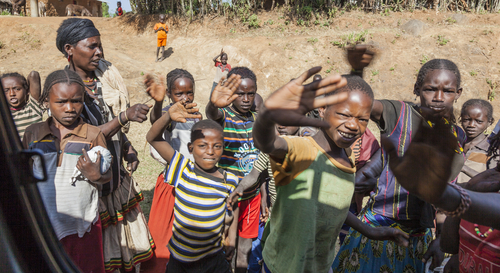Kids with Sickle Cell Anemia in Developing Countries Aren’t Commonly Overweight — Unlike Developed World
Written by |
A group of interdisciplinary researchers from universities and medical colleges in Lagos, Nigeria, recently published a study in the Italian Journal of Pediatrics that has significant public health implications on treating children with sickle cell anemia (SCA) in the developing world. The study, “Wasting and stunting are still prevalent in children with sickle cell anaemia in Lagos, Nigeria,” assessed a population of children in Nigeria to determine the percentage of children with sickle cell anemia (SCA) in a developing country who were either overweight or obese.
To determine this population percentage, researchers enrolled 233 children with SCA who were patients at the Pediatric Hematology Clinic of the Lagos University Teaching Hospital, a publicly-funded clinic, between October 2014 and September 2015. They collected data on each enrolled patient’s weight, height, hemoglobin, hemoglobin fractions, and white cell count. Using Measurements from the World Health Organization (WHO) Child Growth Standards, the percentage of wasting, stunting, and overweight or obese children were determined.
The results showed that in this Lagos, Nigeria, patient population:
- 22.7 percent of the children showed signs of wasting and stunting;
- 11.6 percent of the children were considered overweight;
- 1.7 percent of the children were considered obese;
- Boys from the lower socioeconomic class were 2.42 times more likely to be wasted;
- All children from the lower socioeconomic class were 3.25 times more likely to be wasted;
- Both wasting and stunting were more common with increasing age;
- Sickle cell-related complications and intake of oral penicillin and hydroxyurea were not associated with wasting and stunting.
“Our study suggests that in low-resource countries, nutritional status of children with SCA is still heavily influenced by variables such as age, gender, and socioeconomic status and not necessarily by the factors related to severity of SCA or its management,” the authors wrote.
“We did not find any association between nutritional status and markers of severity of SCA such as sickle-related complications, hospitalization, and bone pain rates in the previous year and hemoglobin level. Similarly, sickle cell-related interventions such as daily oral penicillin and hydroxyurea were only weakly protective against wasting and stunting in the present study,” they added.






